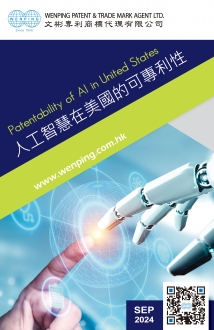In today's rapidly evolving technological landscape, artificial intelligence (AI) has emerged as a transformative force across various industries. From enhancing efficiency in manufacturing to revolutionizing healthcare diagnostics, AI applications have become ubiquitous. However, despite its groundbreaking capabilities, there exists a contentious issue surrounding the patentability of AI technology. While innovators seek to protect their AI inventions, the United States Patent and Trademark Office (USPTO) presents significant challenges in obtaining U.S. patents for AI-based innovations. This article delves into the reasons why AI cannot be patented by the USPTO and explores the implications of this limitation.
One of the fundamental requirements for patentability is the identification of an inventor. According to the USPTO guidance published at the Federal Register on February 13,2024 (see https://www.federalregister.gov/documents/2024/02/13/2024-02623/inventorship-guidance-for-ai-assisted-inventions),which builds on existing case law involving Thaler v. Vidal (i.e., only actual people can be listed as inventors on U.S. patents), an inventor must be a natural person who contributes to the conception of the invention. In other words, only a human being can be named as an inventor on a U.S. patent. Unlike human inventors, AI systems operate autonomously and generate solutions based on algorithms and data inputs. As such, they cannot be recognized as inventors under current U.S. patent laws, which pose a significant obstacle to obtaining patents for AI-generated innovations.
One implication from the USPTO guidance is that a real person must have made a significant contribution to the invention. One way to show the significant contribution is through the way the person constructs the work in view of a specific problem to elicit a particular solution from the AI system. Still, precisely what constitutes a "significant contribution" can be a little bit fuzzy and case-specific, and much of how the USPTO guidance is applied in various situations will be debated in U.S. courts.
Another implication from the USPTO guidance is that inventors can patent AI-assisted creations. As illustrated by the USPTO guidance, if an inventor can show that the work he or she did to get the AI to produce a specific design that enabled the remote-control car to function, then that could open the door to a patent. The practical result is that, when creating a new design, artwork, invention, novel, or even computer code, a human can use an AI-based system to assist in the creation of this content, but must make sure that they are sufficiently involved in the process.
It is worth noting that the USPTO guidance does not require inventors to disclose the use of AI, which can lead to issues such as concealing the involvement of AI, and encouraging so-called patent trolls to apply for broad patents that does not lead to any actual creations but merely serve as the foundation for patent litigations.
In conclusion, while AI holds immense potential to drive innovation and reshape industries, the USPTO's criteria for inventorship pose significant hurdles to obtaining U.S. patents for AI technology. Ultimately, the evolution of U.S. patent law in the context of AI will shape the future of technological innovation and societal progress.


